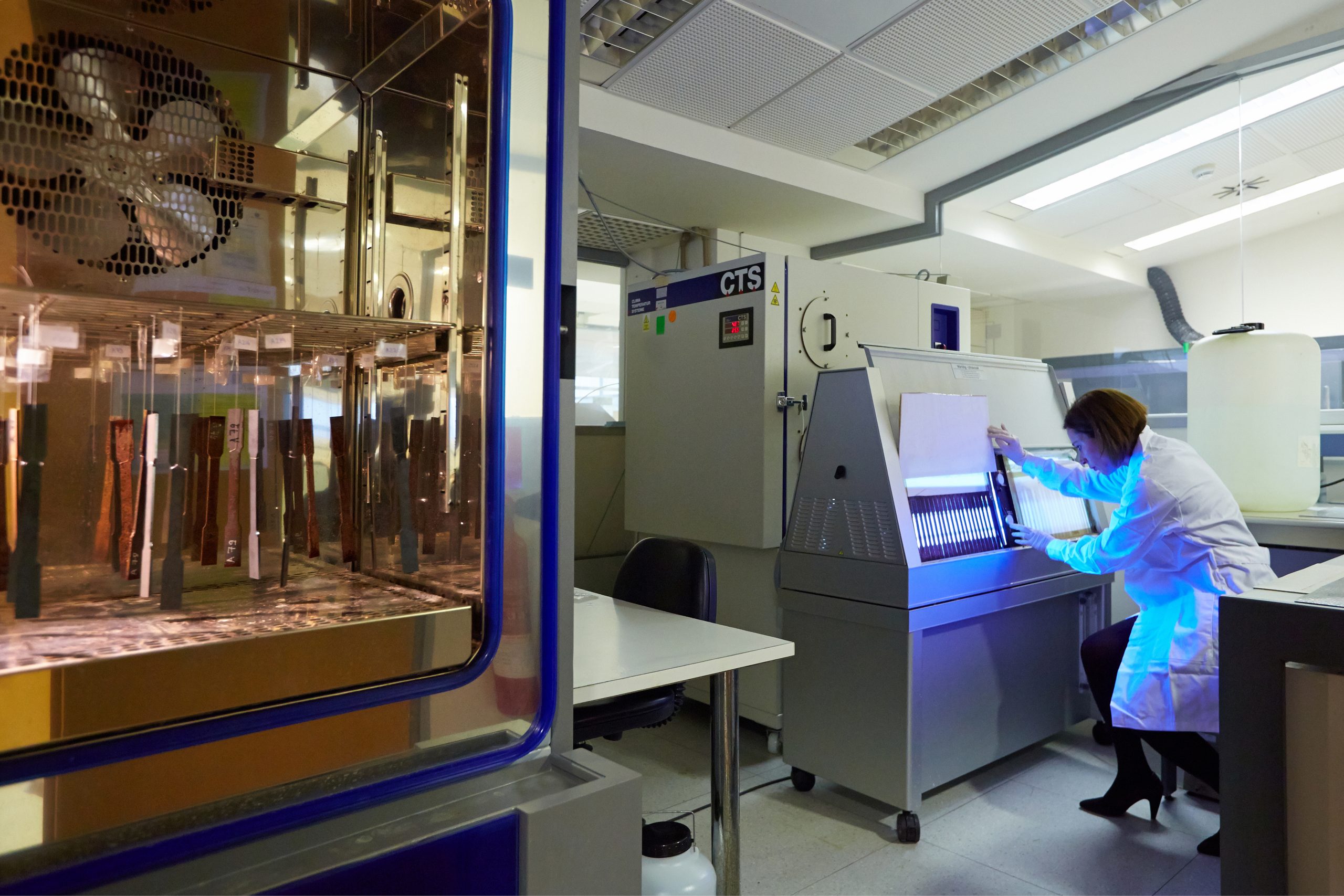Let’s continue checking out what are the 3 concepts that affect supply chain management. As we saw in the previous paper, the 3 concepts are:
a) Demand amplification
b) Deterministic chaos
c) Parallel interactions.
In the previous article, it was explained how demand amplification works, also known as the “Bullwhip effect”. It is where the retailers and suppliers have observed that while customers demand for specific products does not vary (oscillate) much, inventory and back order levels fluctuate considerably across their supply chain.
Deterministic chaos
The next point that affects the supply chain management is deterministic chaos. As mentioned (Wilding, 1998), deterministic chaos is related to the supply chain systems; in theory, because the systems are predictable, but in practice the non-linear effects of many causes make the systems less predictable. Therefore, this leads to stock outs, erratic re-ordering and poor customer service.
Stock outs
Slack et al (2001) explain that stock out costs are incurred by failing to supply customers. If they are external, customers may take their business elsewhere. On the other hand, if customers are internal, stock outs could lead to idle time at the next process. At the end, external customers will be dissatisfied (Slack et al, 2001). As mentioned above, chaos theory indicates that systems are less predictable due to many variables are related. These factors are products stock outs created by suppliers and/or category planners who mismanaged shelf space, promotions, new product introductions or supply chain managers who misjudged long-term demand, faulty in-store ordering and/or replenishing practices, according to Corsten and Gruen (2004).
Erratic re-ordering
The second concept in deterministic chaos is erratic re-ordering. It is important to know first, how a re-ordering system works, in order to understand what an erratic one is. According to Slack et al (2001), the re-order level is defined as the level which the inventory will have reached when a replenishment order needs to be placed, but the inconvenience here is to assume that the demand and the order lead time are perfectly predictable. However, if large quantities are ordered on an infrequent basis, the risk of being out of stock will be diminished (become less) but stockholding costs will increase. On the other hand, if little amounts are ordered often, the stockholding costs will be reduced but ordering costs will rise, these two last points are according to Jessop and Morrison (1994).
Poor customer service
The third concept is poor customer service in relation with deterministic chaos. How can customer service be related with supply chains? Well, Porter (1985) described that a supply chain in a value system concept, is a network of independent firms value chains that are involved in the production and marketing of particular products and services. This network of value chains targets customer satisfaction (cited in Azuma et al, 2009). Also, Lynch (2009) establishes that the customer is the original driver of the entire supply chain; all the risks that an organization faces as part of its supply chain are traced directly back to the customer. However, Jessop and Morrison (1994) describe that a good service level indicator is difficult to apply in practice due to the variables to be considered, such as: investment in stock, costs, performance level and the human factor.
Parallel interactions
The third core concept is parallel interactions. Wilding (1998) describes them as the serial interactions that occur between each echelon in the supply chain, for example: a customer and a supplier. That is why logistics systems are prone to what has been called the “Bullwhip effect”. Forrester defined logistics systems as industrial dynamics due to the information feedback characteristics of industrial activity to show how organizational structure, amplification in policies and time delays in decisions and returns interact to influence the success of the enterprise (Forrester, 1961 cited in Christopher, 2005). Therefore supply chains are dynamics systems.
In order to develop a closer relationship between the echelons mentioned above, Harrison and Van Hoek (2008) comment that when buyers and suppliers relationships get together, they can have common goals, share information, aligned coordination mechanisms, joint decision making and common knowledge base. On the other hand, when they work separately there is lack of relationship goals, separate decision making, internal organization focus, labor turnover and bonus schemes not aligned (Harrison and Van Hoek, 2008).
As we have seen in this article, there are so many factors outside each company that affects, more or less, the operations in their supply chains. But now, let’s take a look about the methodologies that can be used to help us react faster and smoother in the companies we work. Lean, agile and “leagile” methodologies and characteristics.
Lean thinking
Degarmo et al (2003) comment that Taiichi Ohno developed the Toyota Production System, also called Just in Time (JIT) and since 1990 it has been called lean thinking. Womack and Jones (1996) refer to Taiichi Ohno, who used the Japanese word “muda”, that means waste, to refer to any human activity which absorbs resources but creates no value. In order to convert waste to value, he adopted lean thinking.
According to Heizer and Render (2009), lean operations supply the customer with exactly what the customer wants, when the customer wants it, without waste, through continuous improvement, this is JIT. Heizer and Render (2009), comment that Taiichi Ohno classified 7 types of waste:
- Over production. To produce sooner, faster or in greater quantities than the customer needs.
- Waiting time. People or parts that wait for a work cycle to be completed.
- Transportation time. Unnecessary movement of people or parts between processes.
- Over inventory. Raw material, WIP or finished goods which do not have added value.
- Over Motion. Unnecessary movement of people, parts or machines within a process.
- Over processing. Processing beyond the standard required by the customer.
- Defective product (Rework). Non right first time. Repetition or correction of a process.
How is lean thinking related with supply chain management?
In order to apply lean thinking to supply chains, Harrison and Van Hoek (2008) describe that first it is necessary to specify the value of the product or service from the end customer perspective, then to make this value flow by minimizing delays, inventories, defects and downtime thru the supply network, and finally to schedule, produce and deliver based on customer orders not forecasts.
However, Degarmo et al (2003) suggest that lean thinking fails principally for two reasons.
- The first one is that companies have to ensure that problems in quality issues will not reduce inventory and lead times. If the company cannot get to zero defects and zero breakdowns, they will not get into lean manufacturing.
- The second one is related to companies’ management. If top management loses interest in the program, then middle management will also, and through all the employees down to shop floor staff (Degarmo et al, 2003). In terms of global recession, lean thinking was a driver because it generated benefits by reducing stock and now companies have a chance to redesign their systems to know when a customer wants a product, then to deliver it without adding stock investment cost and finally by performing accurate forecasts of demand to reduce costs and improve efficiency (Edwards, 2009).
However, the barrier in lean supply chains is that if variability of unknown customer demands is not reduced from the process, it will be difficult to add value at each step of the supply chain process (Heizer and Render, 2009).
Lean production depends on a stable business environment as then it can maximize its efficiencies of scale (Lysons and Farrington, 2006). Hence, that during global recession customer demand was difficult to predict due to the uncertainty in the global market and the lack of stable business environments. So, we saw what lean thinking methodology is. It works best in high volume, low variety and predictable environments. Now, we will see how “Agile Thinking” works.
Agile Thinking
Agility in the sense of the ability to match supply with demand is not necessarily synonymous with leanness (Christopher, 2005). Agility is needed in less predictable environments where demand is volatile and the requirement for variety is high (Christopher, 2000). Also, an agile supply chain is customer responsive because it is capable of reading and responding to end-customer demand, rather than lean thinking which is based on forecast demand (Harrison and Van Hoek, 2008).
Goldman et al (1995) describe that agile thinking components are:
- Delivering value to the customer
- Being ready for change
- Valuing human knowledge
- Forming virtual partnerships
(Cited in Lysons and Farrington, 2006).
Also, agile supply chain practices imply customer demand fulfilment rather than market mediation (Towers and Bergvall, 2009), therefore to respond quickly to the customer demand, allocation of finished goods is necessary, hence that inventories will increase, but this is in order to anticipate unknown demand (Harrison and Van Hoek, 2008).
In order that agility can be used as a driver to overcome global recession, there are 2 concepts to consider: postponement and decoupling points.
According to Lysons and Farrington (2006), postponement and decoupling are important concepts of agility. By making customized product changes as close as possible to the time of purchase by the end-customer it is possible to provide a wide variety of customized products without incurring high inventory, processing and transportation costs (Lysons and Farrington, 2006).
This is because agile strategy is concerned with assigning capacity so that products can be made rapidly to meet customer demand that is difficult to forecast (Harrison and Van Hoek, 2008). Due to the situation of recession, cost efficiency along with effectiveness represents strategic key elements for obtaining competitive advantage (Khan and Creazza, 2009).
Therefore, supply chains should be widely developed by companies, as it enables to increase the degree of supply chain flexibility, hence mitigate supply chain risk and enhance the resilience of businesses (Khan and Creazza, 2009).
At the end of the day, you will see that both methodologies can be used combined.


















